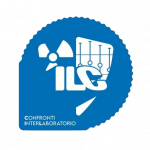For centuries, tarot card has captivated people with its magical allure and profound understandings. Whether you are an experienced practitioner or a curious beginner, delving into the globe of tarot card can use a transformative experience that goes beyond time and space. In this extensive overview, we will explore the background, significance, and analysis of tarot cards, untangling the keys that lie within each intricate layout.
The Origins of Tarot: A Glimpse into Background
Although the specific beginnings of tarot stay shrouded in secret, it is believed to have actually originated in Europe throughout the late 14th century. The earliest well-known tarot cards were made use of for playing video games, instead of prophecy or spiritual techniques. Over time, tarot progressed into a powerful tool for self-reflection, individual growth, and spiritual guidance.
Each tarot card deck consists of 78 cards, separated into 2 main categories: the Significant Arcana and the Minor Arcana. The Major Arcana consists of 22 cards that represent substantial life occasions and spiritual lessons, while the Minor Arcana consists of 56 cards that mirror everyday experiences and difficulties.
Lots of tarot practitioners view the cards as a mirror reflecting the subconscious mind, offering a glance right into one’s innermost ideas, feelings, and wishes. By using the symbolism and imagery of the cards, people can gain useful insights and quality on numerous facets of their lives.
- Significant Arcana: The Journey of the Heart
- Minor Arcana: Reflections of Everyday Life
- Comprehending Tarot Card Significance
Opening the Power of Tarot Card: The Art of Interpretation
Analyzing tarot card cards is both an art and a scientific research, requiring a deep understanding of meaning, intuition, and personal link. Each card holds several layers of meaning, inviting the reader to check out various analyses and insights based upon their distinct point of view and intuition.
When performing a tarot analysis, experts typically utilize various spreads or formats to arrange the cards and create a coherent narrative. Common tarot card spreads consist of the Celtic Cross, the Three-Card Spread, and the Horseshoe Spread, each offering a various perspective on the querent’s question or scenario.
It is necessary to method tarot readings with an open mind, enabling the cards to talk with you in their very own one-of-a-kind language. By cultivating a sense of receptivity and count on the process, you can take advantage of the wisdom and assistance that tarot card needs to use.
Choosing the Right Tarot Card Deck: A Personal Quest
With an abundance of tarot decks available on the market, picking the right one for your practice can seem like a difficult job. Each deck integrates its very own meaning, images, and power, showing the developer’s special vision and analysis of the tarot archetypes.
- Rider-Waite-Smith: The Classic Tarot Deck
- Thoth Tarot: The Esoteric Practice
- Modern Tarot Card Decks: A Contemporary Twist
Embracing Tarot as a Path of Self-Discovery
Whether you are attracted to tarot for spiritual development, personal online tarot insight, or imaginative inspiration, embarking on a trip with the cards can be a transformative and informing experience. By involving with the meaning, images, and knowledge of tarot, you can strengthen your understanding of on your own, your partnerships, and the globe around you.
The Tarot card: A Timeless Tool for Reflection
As you browse the elaborate world of tarot card, remember that the cards are not merely devices for divination but mirrors mirroring the midsts of your spirit. Accept the enigma, meaning, and magic of tarot as you embark on a trip of self-discovery, empowerment, and makeover.
May the wisdom of the cards assist you on your course and illuminate the darkness of your subconscious, disclosing the light within.
